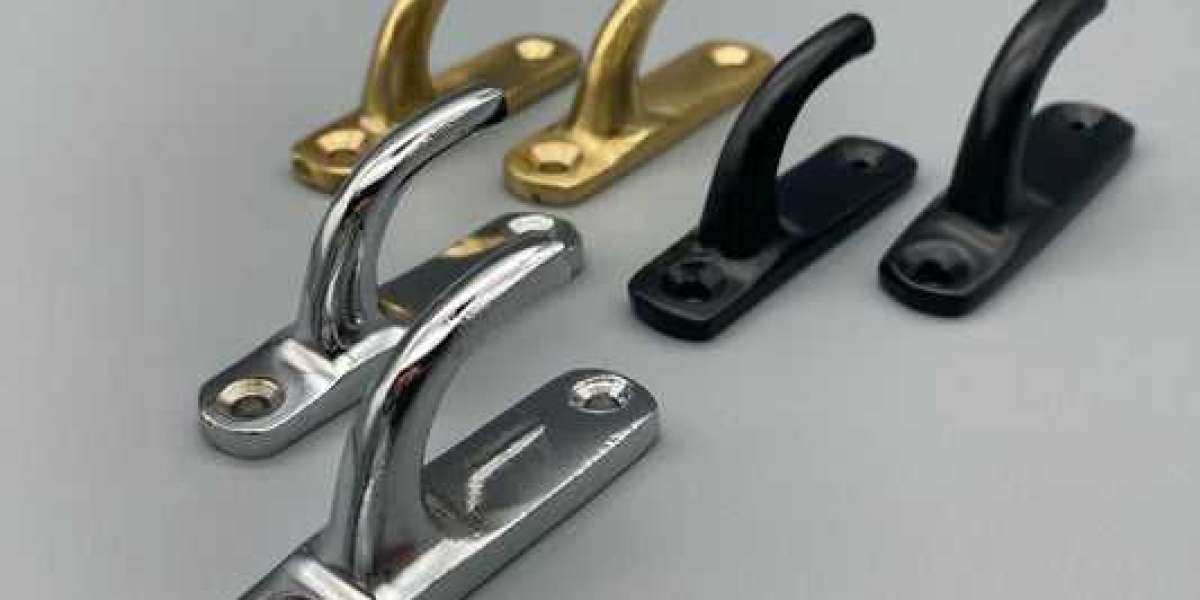Cable glands, though small, play a crucial role in electrical systems, ensuring the secure passage of cables while maintaining environmental protection and electrical integrity. These essential components are widely used in various industries such as manufacturing, oil and gas, telecommunications, and more. Choosing the correct type of cable gland is vital for safety, durability, and functionality in harsh or delicate environments. This article explores the different Types of Cable Glands, their uses, and their importance in various applications.
What Are Cable Glands?
Cable glands, also known as cable connectors or cable fittings, are mechanical devices designed to attach and secure the end of an electrical cable to the equipment. They protect the cable's connection from external factors like dust, moisture, and vibration, ensuring the safety and longevity of the electrical system. Cable glands are widely used with electrical power, control, instrumentation, data, and communication cables.
Depending on the material, type, and sealing mechanism, cable glands can serve various functions, including strain relief, grounding, earthing, and insulation. Selecting the appropriate type of cable gland is critical to the performance of the electrical system, especially in challenging industrial environments.
Key Components of Cable Glands
Before diving into the types, it's essential to understand the key components that make up a cable gland:
- Main Body: The main body houses the cable and connects it to the equipment.
- Lock Nut: This component secures the gland to a panel or junction box.
- Seal: The seal prevents dust, moisture, and other contaminants from entering the connection.
- Compression Nut: This component ensures strain relief and tightens the gland around the cable.
Types of Cable Glands
Metal Cable Glands
Metal cable glands are made from robust materials like brass, stainless steel, or aluminum, providing durability and resistance to harsh environmental conditions. These types of cable glands are ideal for industrial applications that demand high strength, such as oil refineries, chemical plants, and outdoor power installations.
- Brass Cable Glands: Popular for their excellent resistance to corrosion and conductivity, brass cable glands are often used in environments where electrical grounding is necessary.
- Stainless Steel Cable Glands: These are used in highly corrosive environments, offering superior chemical and water resistance. They are ideal for marine applications or industries dealing with aggressive chemicals.
- Aluminum Cable Glands: Lightweight yet strong, aluminum cable glands are preferred for applications where weight is a concern but durability is still necessary.
Plastic (Polyamide) Cable Glands
Plastic cable glands, usually made from polyamide, are lightweight, cost-effective, and resistant to corrosion. These glands are commonly used in indoor or less demanding environments. They provide good insulation and are suitable for applications where metal detection or non-conductive components are required, such as in the food processing or pharmaceutical industries.
- Nylon Cable Glands: Known for their flexibility, nylon glands can withstand vibrations, making them ideal for machinery and automotive applications.
Explosion-Proof Cable Glands (Ex Glands)
Designed for hazardous environments where explosive gases, dust, or fibers are present, explosion-proof cable glands ensure that any potential sparks or explosions remain confined within the equipment. These glands are essential in industries like oil and gas, mining, and petrochemical.
- Flameproof Cable Glands: These glands are built to prevent the transmission of flames from inside the equipment to the outside atmosphere. They comply with stringent safety standards for hazardous areas.
- Increased Safety Cable Glands: These provide additional protection by ensuring that cables are securely fastened and insulated, reducing the risk of sparking or short circuits in dangerous environments.
EMC Cable Glands
EMC (Electromagnetic Compatibility) cable glands are designed to protect electrical systems from electromagnetic interference (EMI). These glands are often used in telecommunications, data centers, and industries dealing with sensitive electronic equipment. They provide proper grounding and shielding, reducing signal loss and ensuring system reliability.
Waterproof Cable Glands (IP68 Rated)
For outdoor applications or environments exposed to water, waterproof cable glands are essential. These glands have a high ingress protection (IP) rating, often IP68, indicating they can resist water ingress and other environmental factors like dust. Waterproof glands are used in industries such as marine, renewable energy (solar and wind farms), and outdoor lighting systems.
Armoured Cable Glands
Designed to be used with armoured cables, these cable glands provide additional mechanical protection for the cables and ensure a secure connection. Armoured cable glands are used in applications where the cables are exposed to mechanical stress, such as underground installations or heavy industrial environments.
Threaded Cable Glands
Threaded cable glands are designed for specific thread types such as metric, NPT (National Pipe Thread), or PG (Panzergewinde). These glands are used in applications where a tight seal is needed between the gland and the threaded entry point, providing mechanical strength and environmental sealing.
Choosing the Right Cable Gland
Selecting the appropriate cable gland requires careful consideration of several factors:
Material Compatibility: Choose the material of the cable gland (metal or plastic) based on the operating environment. For harsh environments, metal glands like brass or stainless steel may be preferred, while polyamide glands work well in less demanding conditions.
Cable Type: Ensure the cable gland matches the type of cable you're using. For instance, armoured cable glands should be used with armoured cables, and EMC glands should be used where electromagnetic shielding is required.
Ingress Protection Rating: The IP rating defines the gland’s ability to resist dust and water ingress. An IP68-rated gland offers the highest level of protection, which is vital for outdoor applications or areas with water exposure.
Size and Thread Type: The size of the cable gland should correspond to the cable's diameter. Additionally, make sure the thread type of the gland matches the equipment you're connecting to.
Operating Temperature: Some environments have extreme temperature ranges, and certain cable glands are better suited to handle these conditions. Check the temperature tolerance of the cable gland to ensure safe operation.
Applications of Different Cable Glands
Industrial Settings: Armoured, metal, and explosion-proof cable glands are common in heavy industries like oil and gas, manufacturing, and construction.
Telecommunications: EMC cable glands are crucial in data centers, communication towers, and IT systems to prevent interference.
Outdoor Installations: Waterproof cable glands with high IP ratings are used in street lighting, solar power installations, and outdoor electrical enclosures.
Hazardous Areas: Explosion-proof and flameproof glands are essential in industries with high risks of fire or explosions, such as chemical plants, refineries, and mining.
Conclusion
Cable glands might be a small part of the electrical infrastructure, but they perform an essential role in ensuring the safety, reliability, and functionality of electrical systems. From industrial settings to telecommunications and hazardous environments, selecting the right type of cable gland is crucial for optimal performance. Whether you need a corrosion-resistant brass gland, a lightweight plastic alternative, or a flameproof option for hazardous environments, understanding the types of cable glands and their applications helps in making the best decision for your specific needs.








